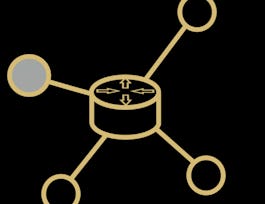This course presents the structure and control blocks of the z/OS BCP and system services. It prepares the new z/OS system programmer to identify potential bottlenecks and performance problems, perform initial error symptom gathering, and identify opportunities and requirements for tailoring an z/OS system. This course also provides prerequisite information needed for further training in specialized areas such as system measurement and tuning and system problem determination.

Schenken Sie Ihrer Karriere Coursera Plus mit einem Rabatt von $160 , der jährlich abgerechnet wird. Sparen Sie heute.


Empfohlene Erfahrung
Wichtige Details

Zu Ihrem LinkedIn-Profil hinzufügen
8 Aufgaben
Erfahren Sie, wie Mitarbeiter führender Unternehmen gefragte Kompetenzen erwerben.


Erwerben Sie ein Karrierezertifikat.
Fügen Sie diese Qualifikation zur Ihrem LinkedIn-Profil oder Ihrem Lebenslauf hinzu.
Teilen Sie es in den sozialen Medien und in Ihrer Leistungsbeurteilung.

In diesem Kurs gibt es 7 Module
This unit sets the stage for the remainder of the course. The major functions of a z/OS system are reviewed, with emphasis on the relationships between components. The use of control blocks in an z/OS system is introduced, and basic IBM z System instruction execution and interrupt handling are described.
Das ist alles enthalten
4 Videos1 Lektüre1 Aufgabe
This unit presents what occurs during the initialization of the base control program of z/OS. It also discusses what control the system programmer has over customization of the Initial Program Load (IPL) process and what control the operator has over the IPL process.
Das ist alles enthalten
5 Videos1 Lektüre1 Aufgabe
z/OS BCP provides task management and supervisor services in order to enable the sharing of system resources and maximize the work that is processed in a given time. A solid understanding of these services is necessary to perform many system programmer activities. Examples include identifying bottlenecks, and determining status when a wait state or failure occurs.
Das ist alles enthalten
4 Videos1 Lektüre1 Aufgabe
z/OS and IBM z System provide the architectural foundation that allows greater flexibility and more design options in the development of application programs with needs that extend beyond the boundaries of a single address space.This unit examines the hardware and software facilities that enable a program to interact with other programs executing in other address spaces and use data in data spaces.
Das ist alles enthalten
4 Videos1 Lektüre1 Aufgabe
One of the primary functions of any computing system is the processing of data. Much of the data that is processed exists external to processor storage; that is, it might be out on a tape or DASD volume or it might be entered from a terminal. The handling of data requires the services of both software and hardware (channel subsystem and the devices attached to it).Understanding the roles of software and hardware in handling I/O requests is necessary for determining how to configure the hardware, how to tune the I/O configuration, and in analyzing I/O-related problems.
Das ist alles enthalten
10 Videos1 Aufgabe
One of the major resources available to the users of an z/OS system is storage. Programs executing in the system, whether user applications or z/OS system routines, are vying for storage. Each of the areas of storage, however, is a limited resource, and use and availability must be managed to maintain program integrity. This managing of storage in z/OS is handled by three storage managers, virtual, real, and auxiliary. In this unit, we will gain an understanding to how each of the areas of storage is assigned, used, and managed is necessary for determining how much storage is required for your installation. This is also required for tuning your system to make the most efficient use of storage, and for analyzing storage-related failures.
Das ist alles enthalten
18 Videos1 Lektüre1 Aufgabe
The resolution of errors often requires the analysis of information produced at the time of the failure. The responsibility of the recovery termination manager (RTM) is to gather the failure indications, interface with system and application error recovery routines, and to generate the failure documentation. Understanding the function of the recovery termination manager and recovery routines is helpful for analyzing the failure documentation and for determining how to tune the system for the control of the documentation produced.
Das ist alles enthalten
5 Videos2 Aufgaben
Dozent

von
Empfohlen, wenn Sie sich für Data Management interessieren

University of California, Irvine

University of Colorado System

University of Colorado Boulder
Warum entscheiden sich Menschen für Coursera für ihre Karriere?





Neue Karrieremöglichkeiten mit Coursera Plus
Unbegrenzter Zugang zu über 7.000 erstklassigen Kursen, praktischen Projekten und Zertifikatsprogrammen, die Sie auf den Beruf vorbereiten – alles in Ihrem Abonnement enthalten
Bringen Sie Ihre Karriere mit einem Online-Abschluss voran.
Erwerben Sie einen Abschluss von erstklassigen Universitäten – 100 % online
Schließen Sie sich mehr als 3.400 Unternehmen in aller Welt an, die sich für Coursera for Business entschieden haben.
Schulen Sie Ihre Mitarbeiter*innen, um sich in der digitalen Wirtschaft zu behaupten.
Häufig gestellte Fragen
Access to lectures and assignments depends on your type of enrollment. If you take a course in audit mode, you will be able to see most course materials for free. To access graded assignments and to earn a Certificate, you will need to purchase the Certificate experience, during or after your audit. If you don't see the audit option:
The course may not offer an audit option. You can try a Free Trial instead, or apply for Financial Aid.
The course may offer 'Full Course, No Certificate' instead. This option lets you see all course materials, submit required assessments, and get a final grade. This also means that you will not be able to purchase a Certificate experience.
When you purchase a Certificate you get access to all course materials, including graded assignments. Upon completing the course, your electronic Certificate will be added to your Accomplishments page - from there, you can print your Certificate or add it to your LinkedIn profile. If you only want to read and view the course content, you can audit the course for free.
You will be eligible for a full refund until two weeks after your payment date, or (for courses that have just launched) until two weeks after the first session of the course begins, whichever is later. You cannot receive a refund once you’ve earned a Course Certificate, even if you complete the course within the two-week refund period. See our full refund policy.
 enthalten
enthalten

